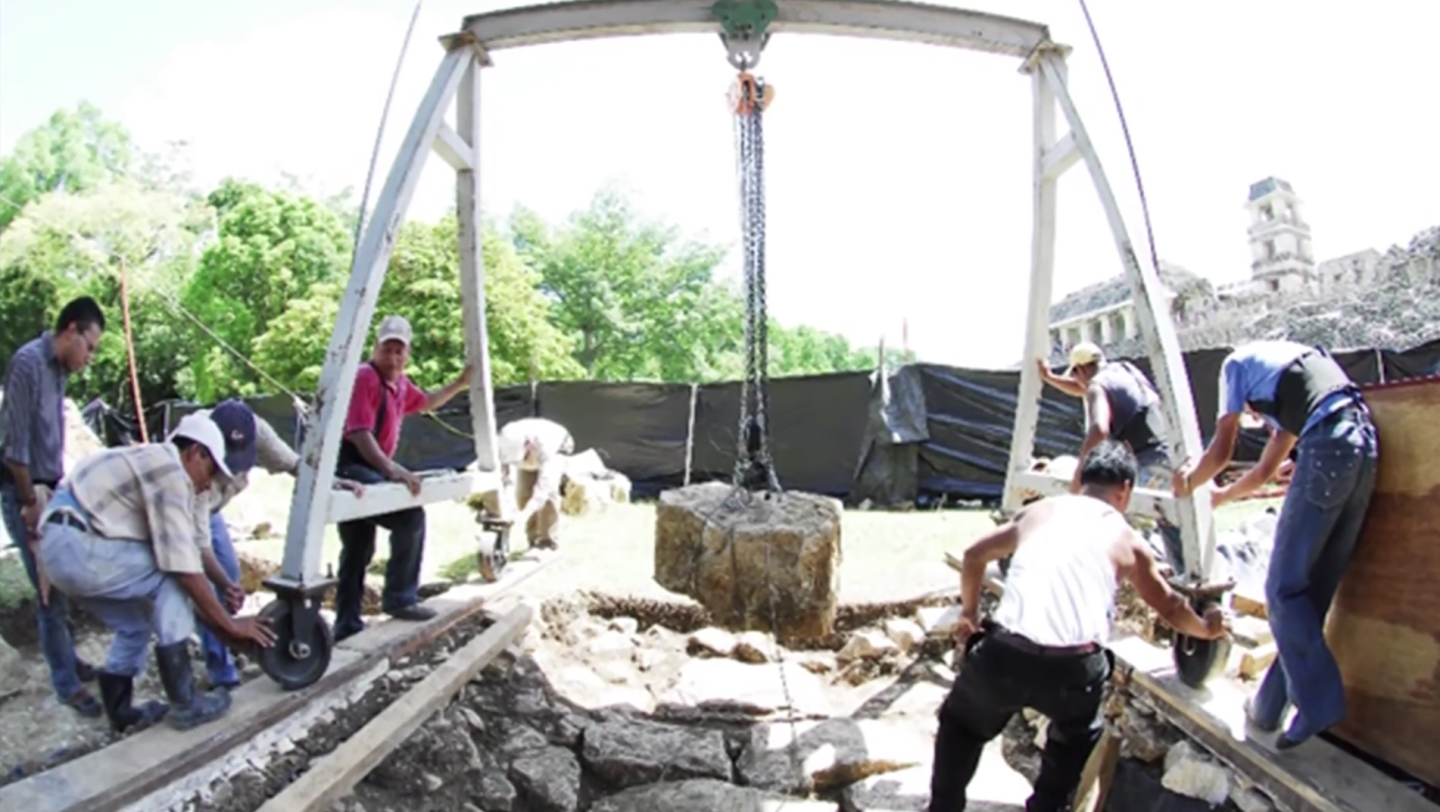Not long before his demise in 683 AD, the ancient ruler Pakal ordered what was one of the Mayan's most ambitious construction projects. The magnificent, nine-level Temple of the Inscriptions went on to house his body for centuries, but it was the intricate stone carvings found in the tomb that have inspired debate about the king's plans for the afterlife. Archaeologists have now unearthed a network of water tunnels beneath Pakal's tomb, which they say not only offers an indication of his intentions to float away to the underworld, but reframes theories about how the grand pyramid itself was built.
The stone slab that topped Pakal's 20-ton sarcophagus was covered with carvings appearing to depict the ruler's resurrection in the afterlife. It has since become an intensely studied example of classic Mayan artwork. In it, Pakal himself appears tilted backwards in front of a tree, surrounded by glyphs and cosmological signs.
This portrayal caught the eye of certain ancient alien theorists, who interpreted the slab to show Pakal at the controls of a spaceship making his way through the Milky Way (a full-size wooden replica even popped up at the International UFO Museum in Roswell, New Mexico).
But the discovery of the underwater tunnels beneath the Temple of the Inscriptions appears to suggest that Pakal's spirit was sent down the gurgler (taking the far-fetched spaceship theory along with it). The canals were found by researchers from Mexico's National Institute of Anthropology, who began digging at the site in 2012 after picking up anomalies under the ground with a geo-radar they feared could cause the pyramid to collapse.

The team uncovered stone tunnels measuring around two feet wide and tall, and while they haven't found a direct connection to the tomb (yet), they believe its close proximity to Pakal's chamber, about 1.7 m (5.57 ft) below the north wall, is symbolic of his route to the underworld.
This canal network likely predated the pyramid itself, the researchers believe, and possibly indicates a spring that Pakal had chosen to build the Temple of the Inscriptions on top of. This line of thinking dovetails nicely with Mayan epigraphy, iconography of the region and other archaeological data that has associated the burial of people with bodies of water.

The researchers did their early exploring of the tunnels using robotic rovers with cameras attached, and now hope to further study the channels with ground-penetrating radars and yet-to-be developed technologies that could allow a closer inspection.
You can take a look at the tunnels and hear from the researchers (in Spanish) in the video below.
Source: National Institute of Anthropology (Spanish) via Phys.org











